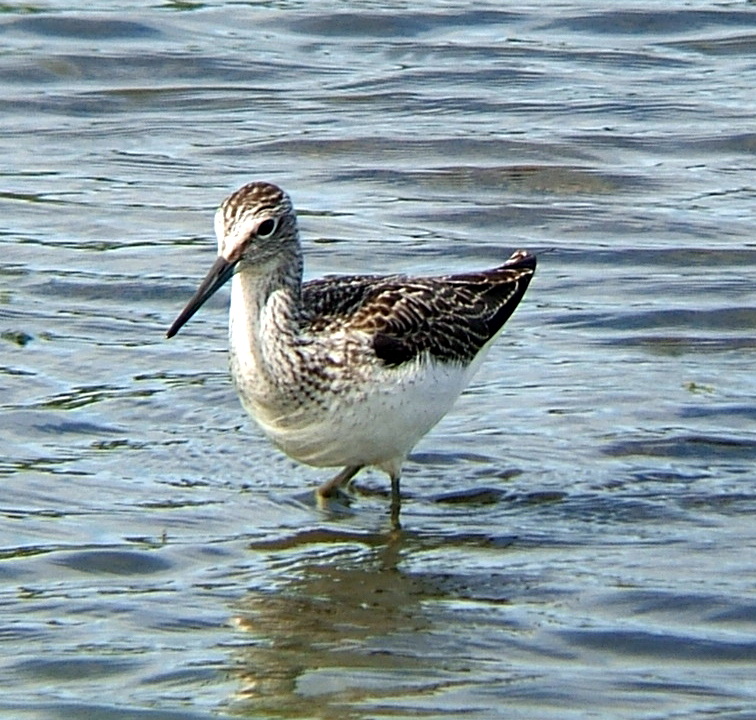Common Greenshank (Tringa nebularia) - Wiki Greenshank
From Wikipedia, the free encyclopedia
[Photo] Common Greenshank (Tringa nebularia) at Hauxley, Northumberland, UK. Greenshanks often feed in fairly deep water. Date 17 August 2007. Author MPF (http://commons.wikimedia.org/wiki/User:MPF)
| Permission is granted to copy, distribute and/or modify this document under the terms of the GNU Free Documentation License, Version 1.2 or any later version published by the Free Software Foundation; with no Invariant Sections, no Front-Cover Texts, and no Back-Cover Texts. A copy of the license is included in the section entitled "GNU Free Documentation License". |
The
Greenshank Tringa nebularia is a wader in the large family
Scolopacidae, the typical waders. Its closest relative is the
Greater Yellowlegs, together with which and the
Spotted Redshank it forms a close-knit group. Among them, these three species show all the basic leg and foot colours found in the shanks, demonstrating that this character is paraphyletic (Pereira & Baker, 2005). They are also the largest shanks apart from the
Willet, which is altogether more robustly built. The
Greater Yellowlegs and the
Greenshank share a coarse, dark, and fairly crisp breast pattern as well as much black on the shoulders and back in breeding plumage.
This is a subarctic bird, breeding from northern Scotland eastwards across northern Europe and Asia. It is a migratory species, wintering in Africa, south Asia, and Australasia, usually on fresh water. It breeds on dry ground near marshy areas, laying about four eggs in a ground scrape.
Greenshanks are brown in breeding plumage, and grey-brown in winter. They have long greenish legs and a long bill with a grey base. They show a white wedge on the back in flight. They are somewhat larger than the related
Common Redshank. The alarm call is a loud trisyllabic whistle.
Like most waders, they feed on small invertebrates, but will also take small fish.
The
Greenshank is one of the species to which the Agreement on the Conservation of African-Eurasian Migratory Waterbirds (AEWA) applies.
http://en.wikipedia.org/wiki/Greenshank| The text in this page is based on the copyrighted Wikipedia article shown in above URL. It is used under the GNU Free Documentation License. You may redistribute it, verbatim or modified, providing that you comply with the terms of the GFDL. |
